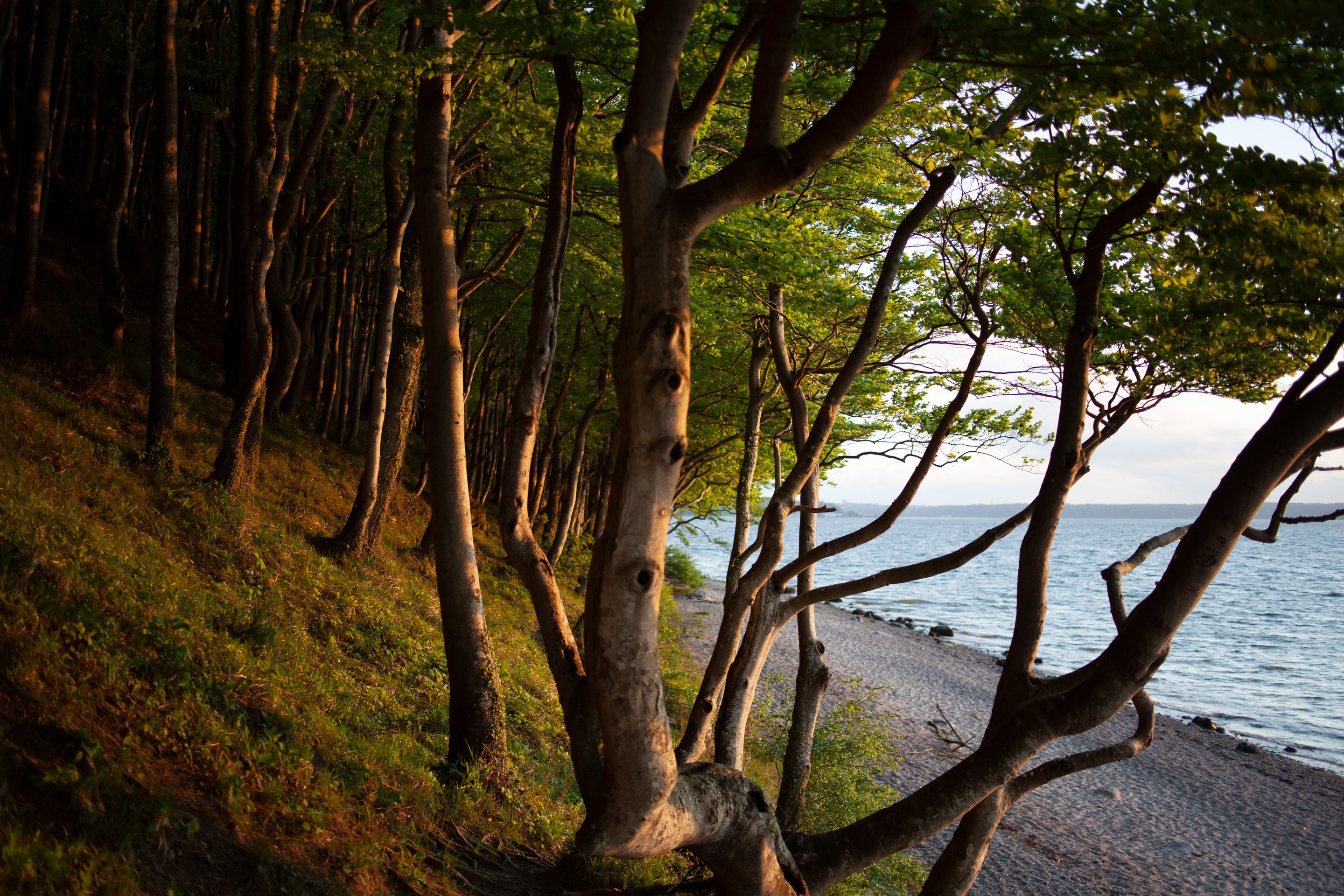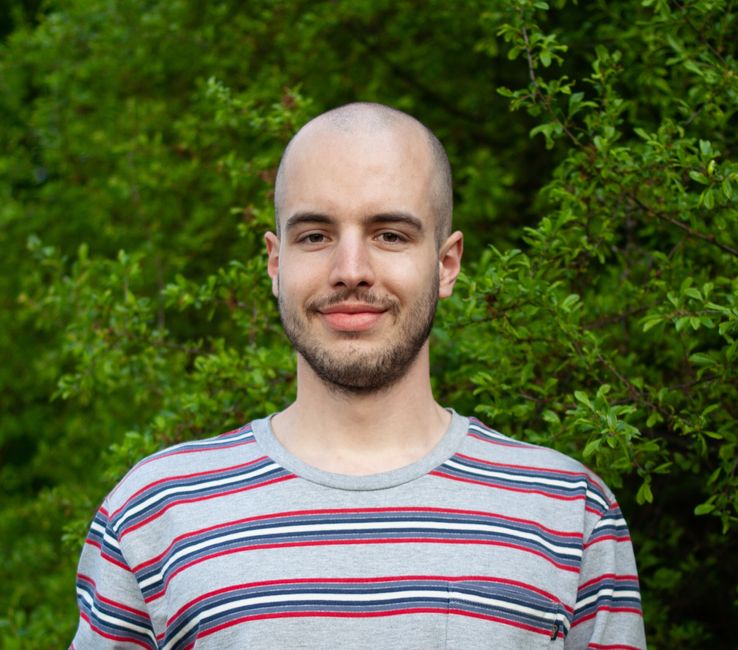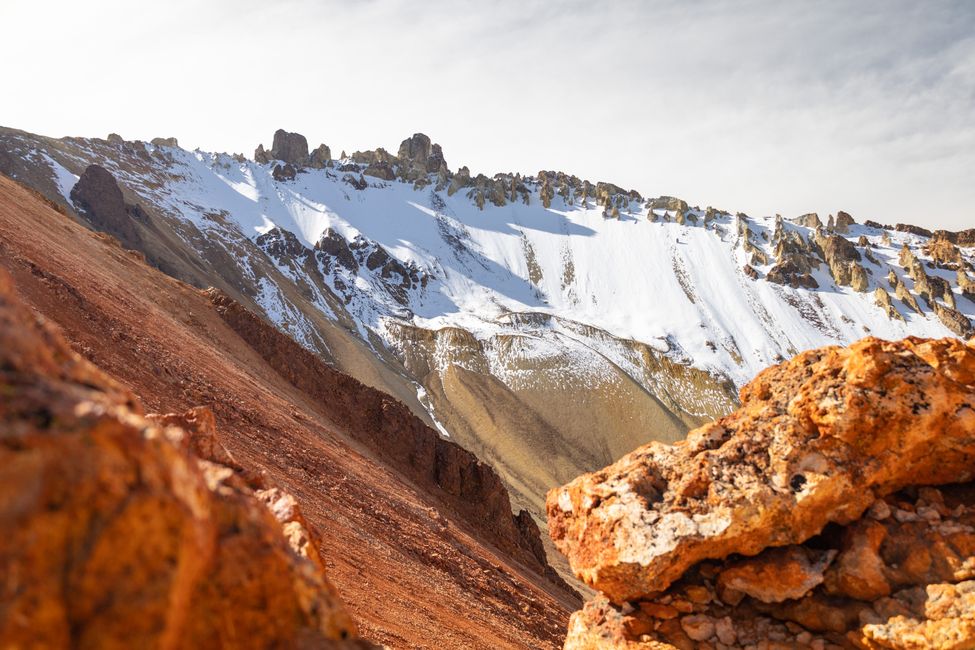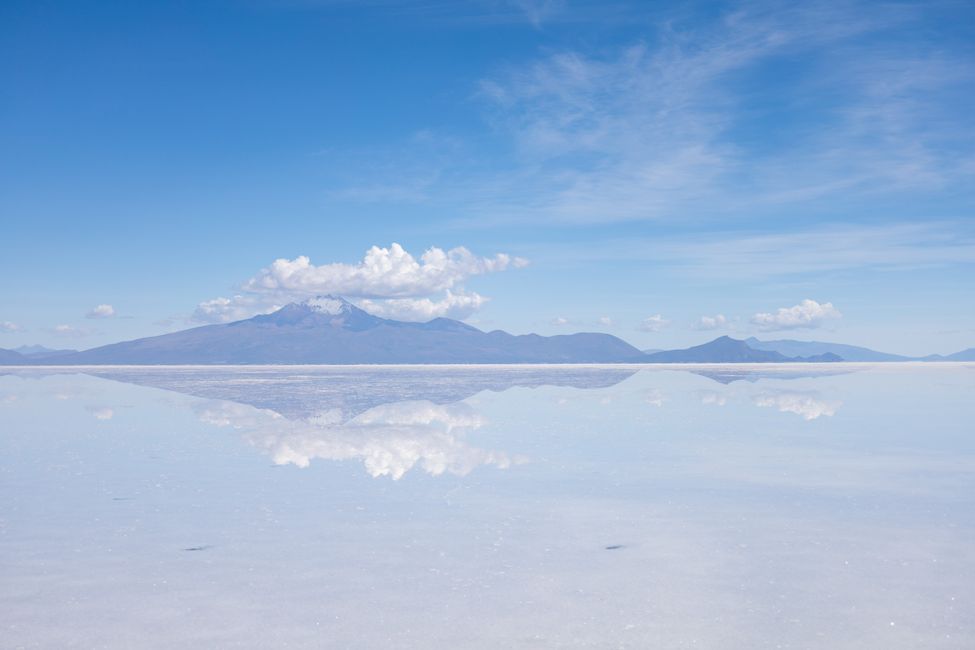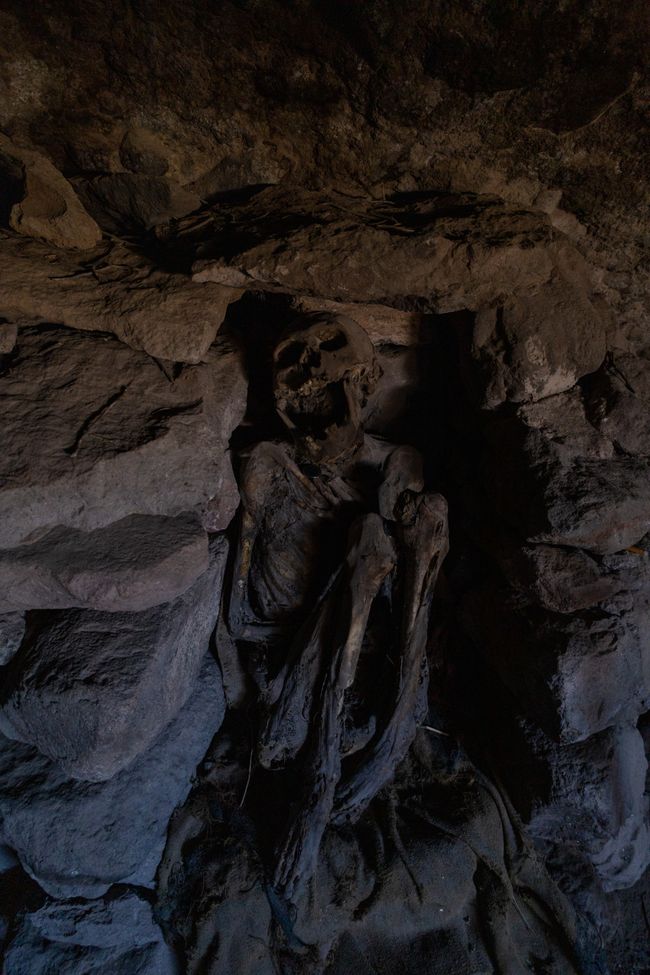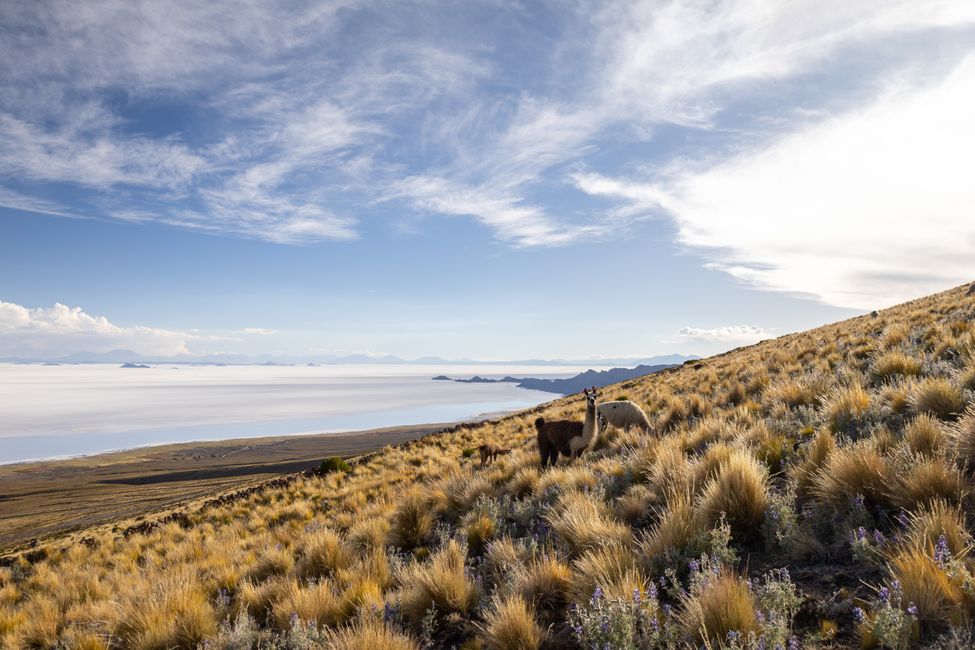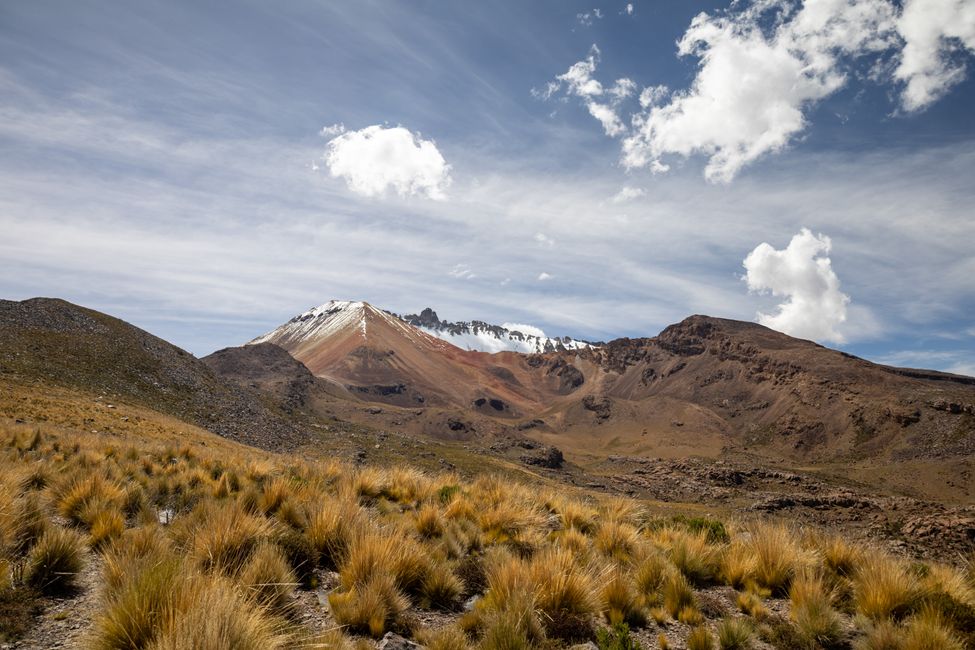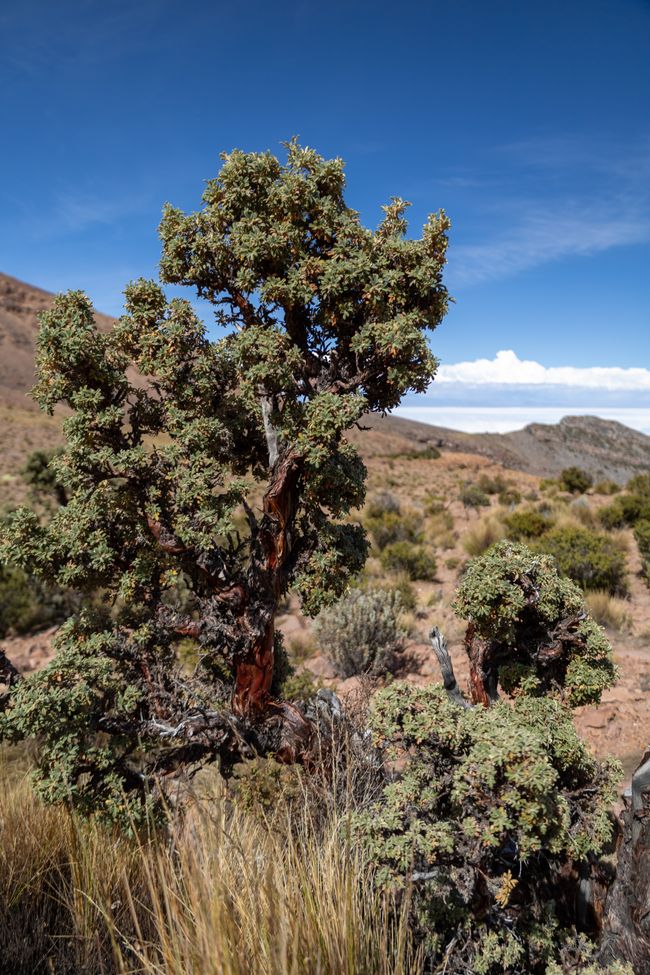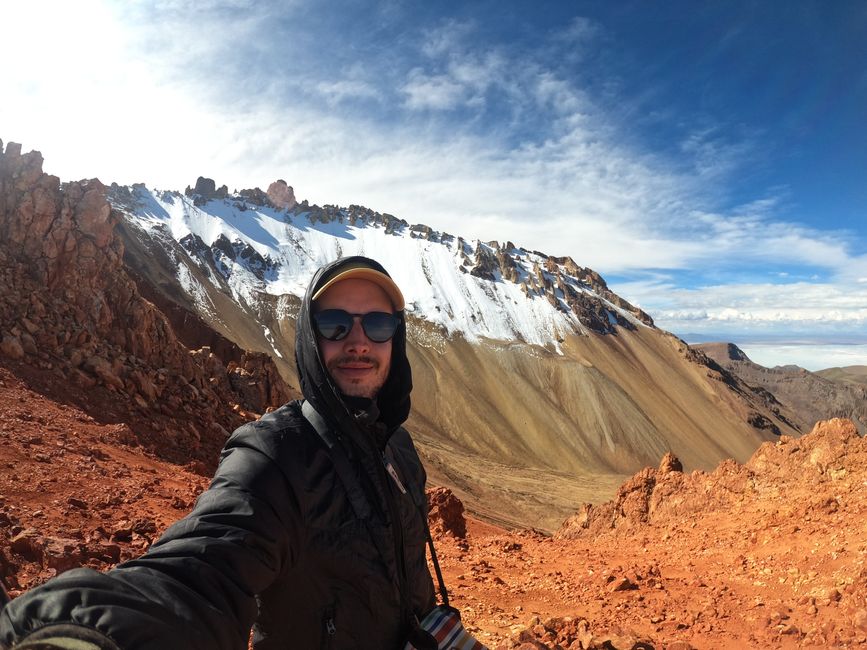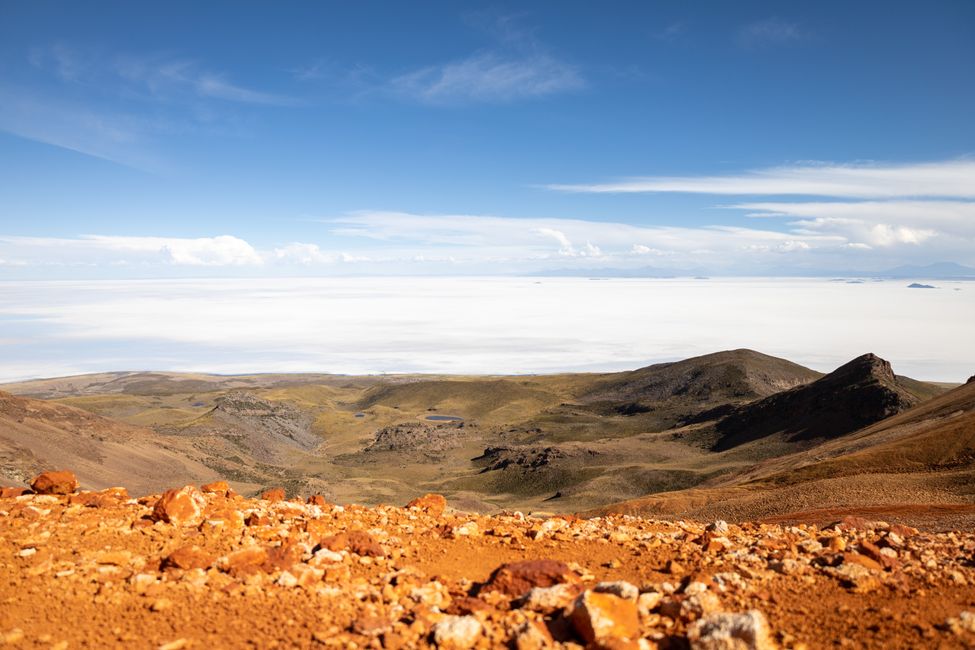03.04.23
Objavljeno: 18.04.2023
Pretplatite se na Newsletter
At the opening time of the Bancofie branch at 8:30 a.m., I am allowed to join the long queue that has formed in front of the door. The doorman policeman asks me about my concern (I am the only gringo in the queue). I explain my situation to him and he lets me go ahead, but entry is only allowed with a mask, which I don't have with me, of course. Fortunately, you can buy those things everywhere. I also have to take off my cap and my hands are disinfected. It's like at the border control. After they have copied my passport, they tell me that the ATM will only open tomorrow afternoon. Mañana mañana, the classic. So another night in Uyuni.
Outside the hostel, I wait to be picked up for the Tunupa Tour. After half an hour of waiting around, the fat travel agency woman yells "Michael Michael" from the other side of the street and looks at me. I wonder if I should tell her that I'm not Michi. But it doesn't really matter. Driver Ivan (Bolivian, not Russian) around 40 years old and a man of few words, races across the salt flats as fast as the old Toyota Land Cruiser can handle.
The volcano, which I have always seen on the horizon, is getting closer.
At the foot of the volcano, we pass the village of Coquesa. Ivan tells me that only one family lives there, which I somehow don't believe.
A grumpy old Cholita charges 30 Bolivianos to enter the volcano. I give her 40 and she says she has no change. Besides, there is no guide, as the fat travel agency woman originally assured me. Well, there is one, but exactly one, and he is already with a group of Americans.
I mean, I can go up alone too. We drive up a dirt road a bit further until we can only continue on foot. Ivan also shows me the cave with skeletons of ancient indigenous people, he doesn't know exactly when. A zipline is stretched over the valley of the cave. Ivan says it's not worth putting it into operation yet. Too few tourists since the pandemic.
He's right. I make my way to the crater rim of the extinct volcano and only meet llamas who look curiously over.
With increasing altitude, I start to get slight headaches and difficulty breathing, so I often have to take a break, but with the magnificent view over the vastness of the salt flats, it doesn't get boring. The last section of the ascent consists only of reddish scree.
Once I reach the crater rim at an altitude of around 5000m above sea level, there is a fairly fresh wind blowing. Otherwise, it is completely quiet. No other person (especially no other tourist) in sight. Wonderful.
I slide down the scree. The descent takes only about half as long as the ascent.
In the village, I am served rice with vegetables and tuna patties.
I connect my phone to the built-in Bluetooth radio for the return trip.
Ivan also likes the Red Hot Chili Peppers and envies me when I tell him that I'm going to their concert in June.
The sun sets in spectacular colors. A thunderstorm front with many lightning strikes is approaching on the horizon.
I admire how he finds his way back to Uyuni through the salt flats in the dark without navigation and without any signs, and I tell him that it's more like steering a ship across a lake than driving a car. He modestly laughs.
Back in the hostel room, an Australian raves about Sucre, so I change my plans and will take the night bus to Sucre tomorrow evening instead of La Paz.
Pretplatite se na Newsletter
Odgovor

Izvješća o putovanju Bolivija
